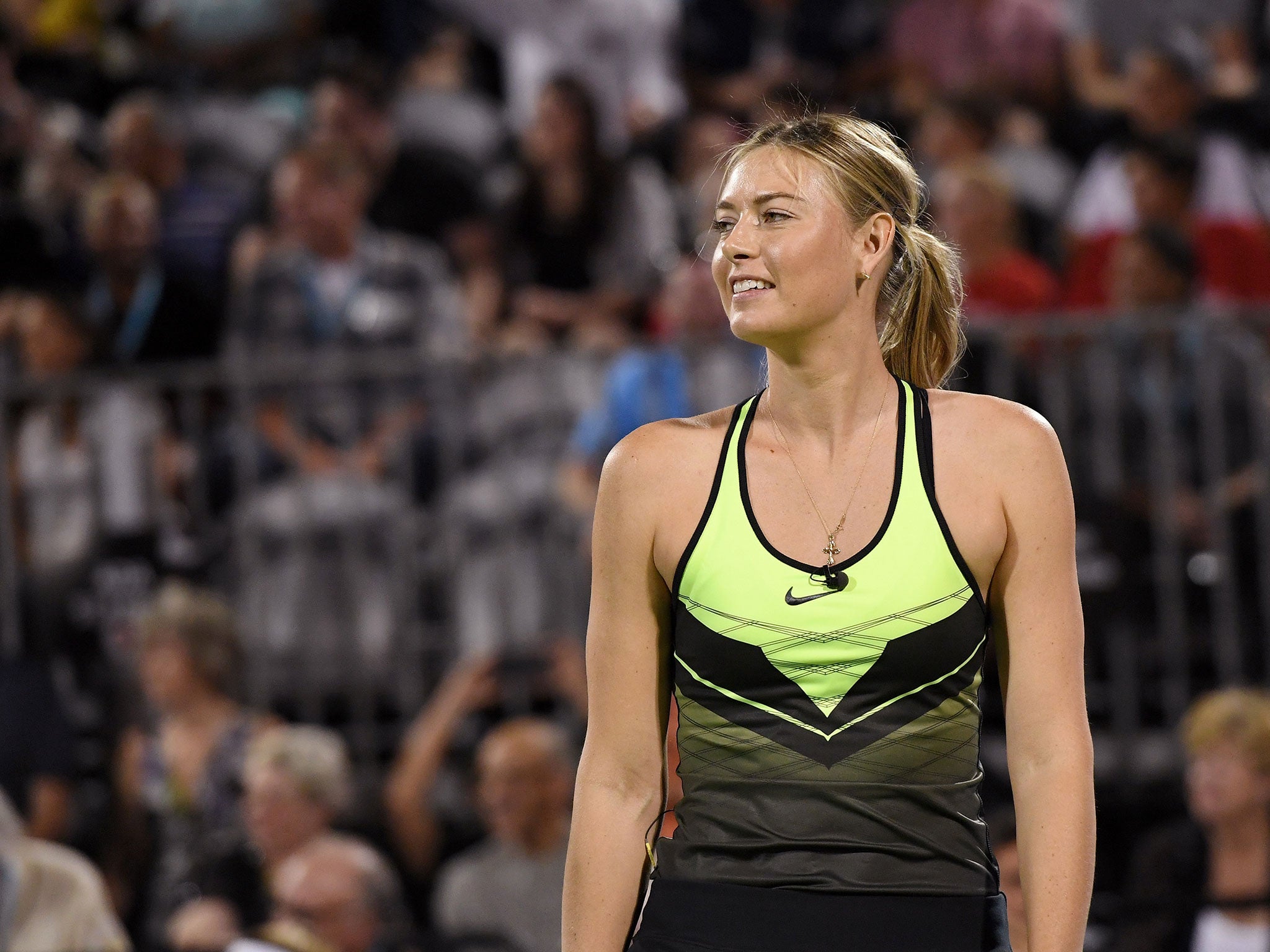The red carpet is already being laid for Maria Sharapova's return - but it doesn't sit right at all
After appearing in a recent charity event alongside John McEnroe and Andy Roddick, Sharapova is now due to play Garbine Muguruza in December. But what sort of message does this send?

The reintegration of Maria Sharapova into the tennis fold is gathering pace. The 29-year-old Russian is banned from playing competitively until the end of April, having tested positive for the banned drug Meldonium at this year’s Australian Open, but earlier this month she played in a charity event in the United States alongside the likes of John McEnroe and Martina Navratilova. Now her welcome back into the tennis family will move up another gear when she faces Garbine Muguruza in an exhibition event in Madrid in December.
To appear on court at Caesars Palace in Las Vegas with some former players is one thing, but Sharapova’s meeting with Muguruza is of a different order. The exhibition match – on a playing surface of clay on one side of the court and grass on the other – is being staged on the Manolo Santana Centre Court at Madrid’s Caja Magica, which in the spring stages one of the year’s biggest clay-court tournaments in the build-up to the French Open.
Even more importantly, Sharapova will be facing a reigning Grand Slam champion, Muguruza having won the French Open earlier this year. The occasion will help to hasten Sharapova’s acceptance back into the game, but Muguruza should consider the implications of appearing on court with a player who is currently serving a ban for a drugs offence. Of course the Spaniard is not breaking any rules by doing so, but at a time when the use of drugs remains one of the most contentious issues in sport what sort of message does it send out?
Despite the triumphant reaction of Sharapova and some of those around her following the reduction of her suspension from two years to 15 months by the Court of Arbitration for Sport earlier this month, the inescapable fact is that the Russian is still banned because she tested positive for what the World Anti-Doping Agency considers to be a performance-enhancing drug.
Even if you take at face value Sharapova’s assertion that she had been taking Meldonium (under its trade name of Mildronate) for genuine health reasons since 2006 and that the tennis authorities had failed to give sufficient warning that the drug was being placed on the banned list from the start of this year, an athlete remains responsible for any substance entering their body.
That was still the case despite Sharapova’s agent, Max Eisenbud, telling the original International Tennis Federation tribunal that it had been his job to monitor the banned drugs list and that he had been distracted from doing so last year by his divorce.
There are clearly plenty of people within tennis who are prepared to welcome back Sharapova with open arms even before she serves her time. Billie Jean King, perhaps the greatest campaigner for justice in the history of women’s tennis, was all smiles as the joint host with Elton John of the World Team Tennis Smash Hits event at Caesars Palace, where McEnroe and Navratilova high-fived Sharapova on court.
Sharapova, who also appeared last Thursday at a New York function to celebrate the 20th anniversary of Tiger Woods’ charitable foundation, disappeared completely from the Women’s Tennis Association’s world rankings this week. To appear in the list you need to have competed in at least three rankings tournaments in the previous 12 months. Sharapova has not played competitively since her positive drugs test in Melbourne in January
When her ban expires at the end of April, the former world No 1 will - initially at least - need wild cards to compete in tournaments, though that is not expected to be a problem. “I would be very surprised if there are too many tournaments that wouldn’t extend her that opportunity,” Steve Simon, the head of the Women’s Tennis Association, said.
Madrid, where Sharapova will face Muguruza in December, stages the first big tournament for which the Russian will be eligible in the spring, so it will be no surprise if she makes her competitive comeback there.
Thereafter the French Open and Wimbledon will be among those tournaments facing interesting decisions. Should they hand a wild card to a returning drugs offender? Wild cards are usually given to up-and-coming youngsters from the host country, to those just below the rankings cut-off, or to players returning after injury, in the way that the US Open gave Juan Martin del Potro a helping hand this summer.
There is an argument, of course, that Sharapova will have served her punishment by that time and that tennis should indeed welcome back a player who has been one of the sport’s biggest attractions for more than a decade. But should the red carpet be laid out before her time is up? That, to some, is another matter.
Subscribe to Independent Premium to bookmark this article
Want to bookmark your favourite articles and stories to read or reference later? Start your Independent Premium subscription today.

Join our commenting forum
Join thought-provoking conversations, follow other Independent readers and see their replies